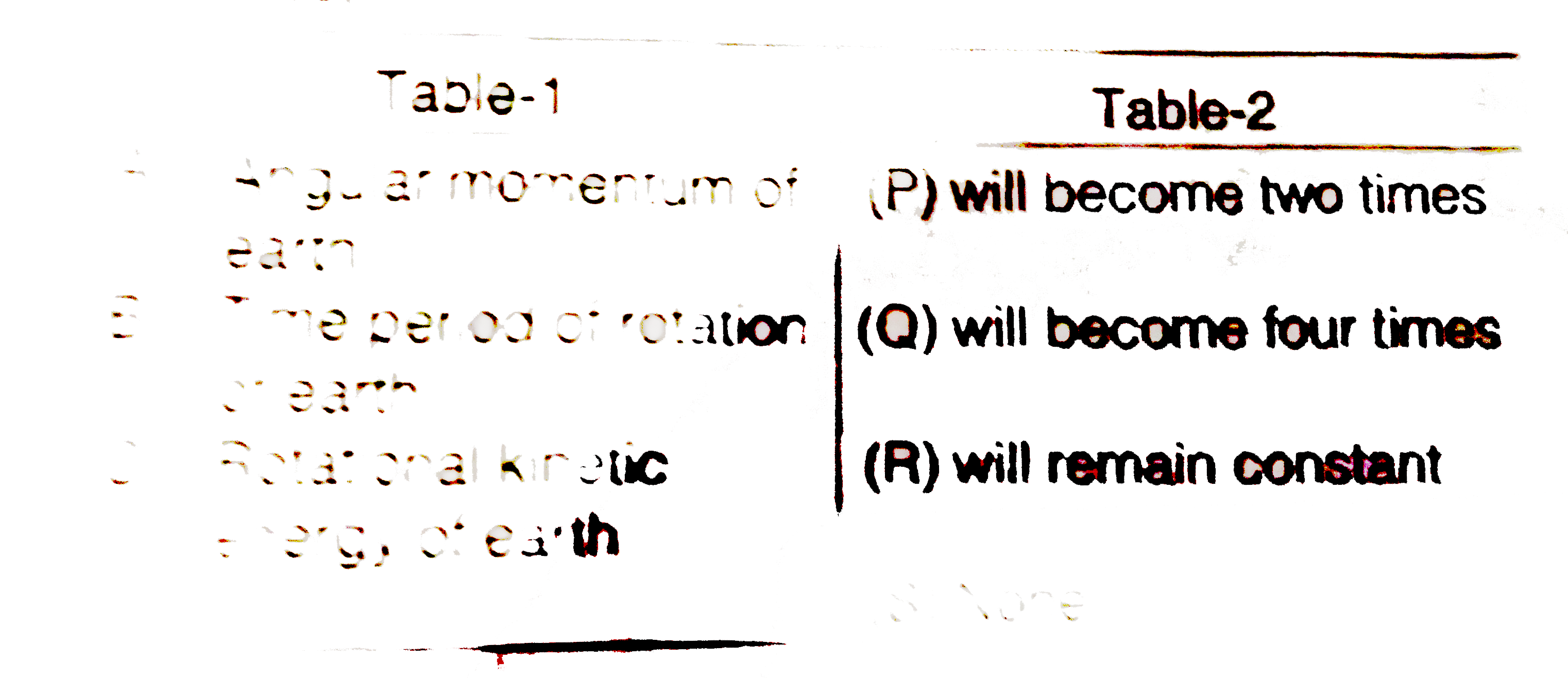The density of the stretched string is changed by 2% without change in tension and radius. The change in transverse wave velocity.
2% increase
1% increase
1% increase or decrease
4% change
The correct Answer is:C
To find the change in transverse wave velocity when the density of a stretched string is changed by 2%, we can follow these steps:
Step 1: Understand the formula for wave velocity
The velocity V of a transverse wave on a string is given by the formula:
V=√Tρ
where T is the tension in the string and ρ is the density of the string.
Step 2: Identify the changes
In this problem, we are told that the density ρ changes by 2% while the tension T remains constant.
Step 3: Calculate the percentage change in velocity
The percentage change in velocity can be approximated using the following relationship:
ΔVV≈12ΔTT−12Δρρ
Since there is no change in tension (ΔT=0) and the area of cross-section does not change, the first term becomes zero. The only term that contributes is the change in density.
Given that the density changes by 2%, we have:
Δρρ=0.02
Substituting this into our equation gives:
ΔVV≈−12⋅0.02
Step 4: Simplify the expression
Calculating the above expression:
ΔVV≈−0.01
This means that the percentage change in velocity is approximately -1%.
Step 5: Interpret the result
The negative sign indicates that the velocity decreases. Therefore, the change in transverse wave velocity is a decrease of 1%.
Final Answer
The change in transverse wave velocity is a decrease of 1%.
---
The velocity V of a transverse wave on a string is given by the formula:
In this problem, we are told that the density ρ changes by 2% while the tension T remains constant.
The percentage change in velocity can be approximated using the following relationship:
Calculating the above expression:
The negative sign indicates that the velocity decreases. Therefore, the change in transverse wave velocity is a decrease of 1%.
The change in transverse wave velocity is a decrease of 1%.
Topper's Solved these Questions
- WAVE MOTIONBook:AAKASH SERIESChapter:WAVE MOTIONExercise:LECTURE SHEET (EXERCISE-II (LEVEL-II(ADVANCED) STRAIGHT OBJECTIVE TYPE QUESTIONS))
Explore 6 Videos
- WAVE MOTIONBook:AAKASH SERIESChapter:WAVE MOTIONExercise:LECTURE SHEET (EXERCISE-II (LEVEL-II(ADVANCED) MORE THAN ONE CORRECT ANSWER TYPE QUESTIONS))
Explore 4 Videos
- WAVE MOTIONBook:AAKASH SERIESChapter:WAVE MOTIONExercise:LECTURE SHEET (EXERCISE-I (LEVEL-II(ADVANCED)MATRIX MATCHING TYPE QUESTIONS))
Explore 1 Video
- UNITS AND MEASUREMENTSBook:AAKASH SERIESChapter:UNITS AND MEASUREMENTSExercise:EXERCISE -3
Explore 66 Videos
- WAVE MOTION AND SOUNDBook:AAKASH SERIESChapter:WAVE MOTION AND SOUNDExercise:PROBLEMS (LEVEL - II)
Explore 97 Videos
Similar Questions
Knowledge Check
The speed of transverse wave on a stretched string is
Adirectly proportional to the tension in the stringBdirectly proportional to the square root of the tensionCinversely proportional to liveDinversely proportional to sqyare of tension
The extension in a string obeying Hooke's law is x. The speed of transverse wave in the stretched string is v. If the extension in the string is increased to 1.5x, the speed of transverse wave will be
View SolutionIf radius of earth is reduced to half without changing its mass,

View SolutionA wave moves with a certain speed in a stretched string. The percentage change in tension required to increase the velocity by 1 %, is approximately
View SolutionA string of length 2L, obeying hooke's law, is stretched so that its extension is L. the speed of the transverse wave travelling on the string is v. If the string is further stretched so that the extension in the string becomes 4L. The speed of transverse wave travelling on the string will be
View SolutionA string of length 2L, obeying Hooke's Law, is stretched so that its extension is L. The speed of the tranverse wave travelling on the string is v. if the string is futher stretched so that the extension in the string becomes 4L. The speed of transverse wave travelling on the string will be
View SolutionWhat are the dimensions of the change in velocity ?
View SolutionThe surface area of a solid sphere is increased by 21% without changing its shape. Find the percentage increase in its:
radius
View Solution